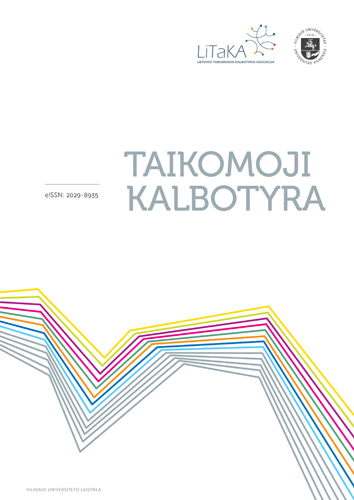Naujųjų skolinių kaitybinio ir darybinio adaptavimo modelių produktyvumas
Productivity patterns of derivational and inflectional adaptation of new borrowings
Author(s): Loreta Vaicekauskienė, Ineta Dabašinskienė, Laura Kamandulytė-MerfeldienėSubject(s): Morphology, Descriptive linguistics
Published by: Vilniaus Universiteto Leidykla
Keywords: new borrowings; natural morphology; inflexion; word formation; productivity;
Summary/Abstract: The paper analyses affixation of new borrowings in Lithuanian and the process of their integration into the system of Lithuanian morphological paradigms applying the framework of Natural Morphology. Two word classes, nouns and adjectives, have been analysed and productivity patterns of the new lexicon are presented and discussed. To the group of new borrowings are assigned those items that have been accepted into Lithuanian since 1990 or those that have not been included into the “Dictionary of International Words” (1985). The corpus of data used for the present analysis is compiled from the material found in the Database of New Borrowings, which provides information about borrowing into Lithuanian in written public texts of the last two decades, and the Corpus of Spoken Lithuanian (2006–2009). It has been found that the new borrowings follow the inflectional and derivational rules of the most productive morphological paradigms of Lithuanian. The most productive inflectional class of the borrowed nouns is -as, less productive is -is (-io), and the least productive is -a. As for the suffixes, the most productive are -imas (signalling abstract nouns), -ininkas (naming of persons), and the feminine derivational form -inė (from the masculine form –inis) for naming of instrument/ location. The newly borrowed adjectives, as a rule, are only rarely integrated into Lithuanian vocabulary by just adding the Lithuanian inflectional endings, they are mainly integrated using a suffix. In the adjective group the most productive suffix is -inis, while the least productive is -iškas. The research of new borrowings as either inflectional or derivational. This is due to the fact that the derivational relationship between the base and the derived forms in the case of new borrowing is difficult to identify and to prove.
Journal: Taikomoji kalbotyra
- Issue Year: 2014
- Issue No: 3
- Page Range: 1-27
- Page Count: 27
- Language: Lithuanian

